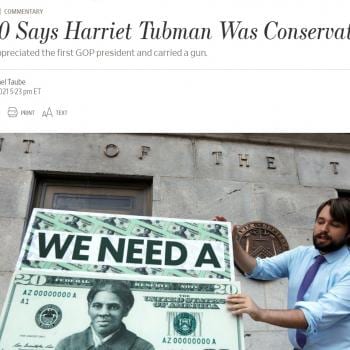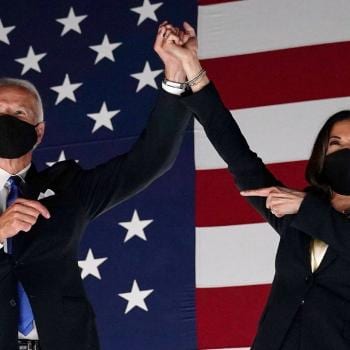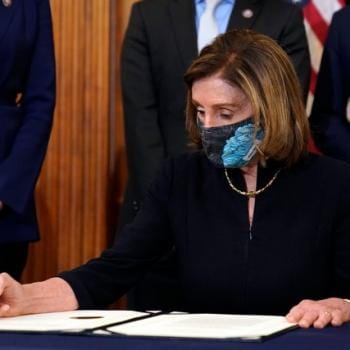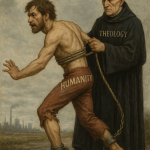In a video posted on his Facebook page over the weekend, right-wing pastor Rick Joyner blamed Barack Obama for the current rise of white supremacist groups in America.
Joyner said that those who have criticized President Trump for not denouncing white supremacists forcefully enough following the violence in Charlottesville but have not denounced Black Lives Matter “are hypocrites of the worst order” because BLM is far more responsible “for the divisions rising in America than the white supremacist groups.”
“Why do I say that?” Joyner said. “Because the white supremacist groups probably would not exist now if it had not been for Obama. They were just about fading out, we had just about dealt with racism in America.”
Joyner said that while he did not approve of Obama’s policies, he was very proud “to be a part of a nation that would elect someone from a minority like that as their president” and that he had high hopes that Obama would “help continue the healing of the racial division in America.”
“That didn’t happen,” Joyner lamented. “It went the other direction, threw fuel on the fire of racism in our country.”
If you look only at the surface level and not beyond it, there is some intuitive sense to what Joyner says. White people like Joyner didn’t typically hear about black men being killed by police—or about black boys being followed by security—before Black Lives Matter. White people like Joyner rarely heard about white supremacist groups until Obama’s election, when these groups expanded, grew, and became more vocal. The problem is that Joyner posits that this is cause and effect.
The truth is this: Racism is more comfortable (for white people) when it is invisible. Out of sight, out of mind, if you will. At issue is not actually the presence or absence of racism—black men were getting shot by police long before Michael Brown and Ferguson, Missouri—but the visibility of racism. Black Lives Matter didn’t create racial tensions. It laid bare existing racial tensions. It made racism visible, and that makes white people uncomfortable.
It’s much easier to pretend that we live in a meritocracy than it is to acknowledge that we never fixed racism.
Obama’s election did the same thing Black Lives Matter has done—it brought racism that already existed out of the shadows. It did not create racism. Joyner claims that “white supremacist groups probably would not exist now if it had not been for Obama.” I mean, really? It is absolutely true that we saw an increase in white supremacist organizing under Obama. But that was because the idea of having a black president outraged white supremacists.
You know what? In a twisted way, Joyner is right. We likely would not see the white supremacist groups we do today if Obama had not been elected—or if Black Lives Matter had never hit the national stage. When white supremacy is the rule of the land, there is no need to protect it. When white supremacy is challenged, its defenders spring into action.
But that does not mean racism and white supremacy did not already exist. It just means these things were largely invisible—to white people.
You know who cannot ignore racism? People of color. People of color cannot ignore racism. White people like Joyner may have gone for years assuming that racism was a think of the past, but people of color don’t generally have that luxury.
I was in a training session led by a thirty-something black man a few months ago. He talked about growing up in an African American community and gradually becoming aware of racism when he entered more integrated spaces. He mentioned walking down the street and watching white people lock their car doors as he went by. That is an experience I have never had, and never will have. It is an experience that is invisible—to me, but not to him.
There is precedent for responses like Joyner’s. None of this is new. In his Letter from a Birmingham Jail, Martin Luther King Jr. wrote as follows:
I had hoped that the white moderate would understand that the present tension in the South is a necessary phase of the transition from an obnoxious negative peace, in which the Negro passively accepted his unjust plight, to a substantive and positive peace, in which all men will respect the dignity and worth of human personality. Actually, we who engage in nonviolent direct action are not the creators of tension. We merely bring to the surface the hidden tension that is already alive. We bring it out in the open, where it can be seen and dealt with. Like a boil that can never be cured so long as it is covered up but must be opened with all its ugliness to the natural medicines of air and light, injustice must be exposed, with all the tension its exposure creates, to the light of human conscience and the air of national opinion before it can be cured.
I have been amazed, over the past few years, to see how closely white responses to Black Lives Matter line up to white responses to the civil rights movement five decades ago. We like to imagine that we would have been marching alongside Martin Luther King, Jr., if we had been alive at the time. But would we? How we react to Black Lives Matter—our involvement in or criticism of that group—likely provides a proximate answer.















